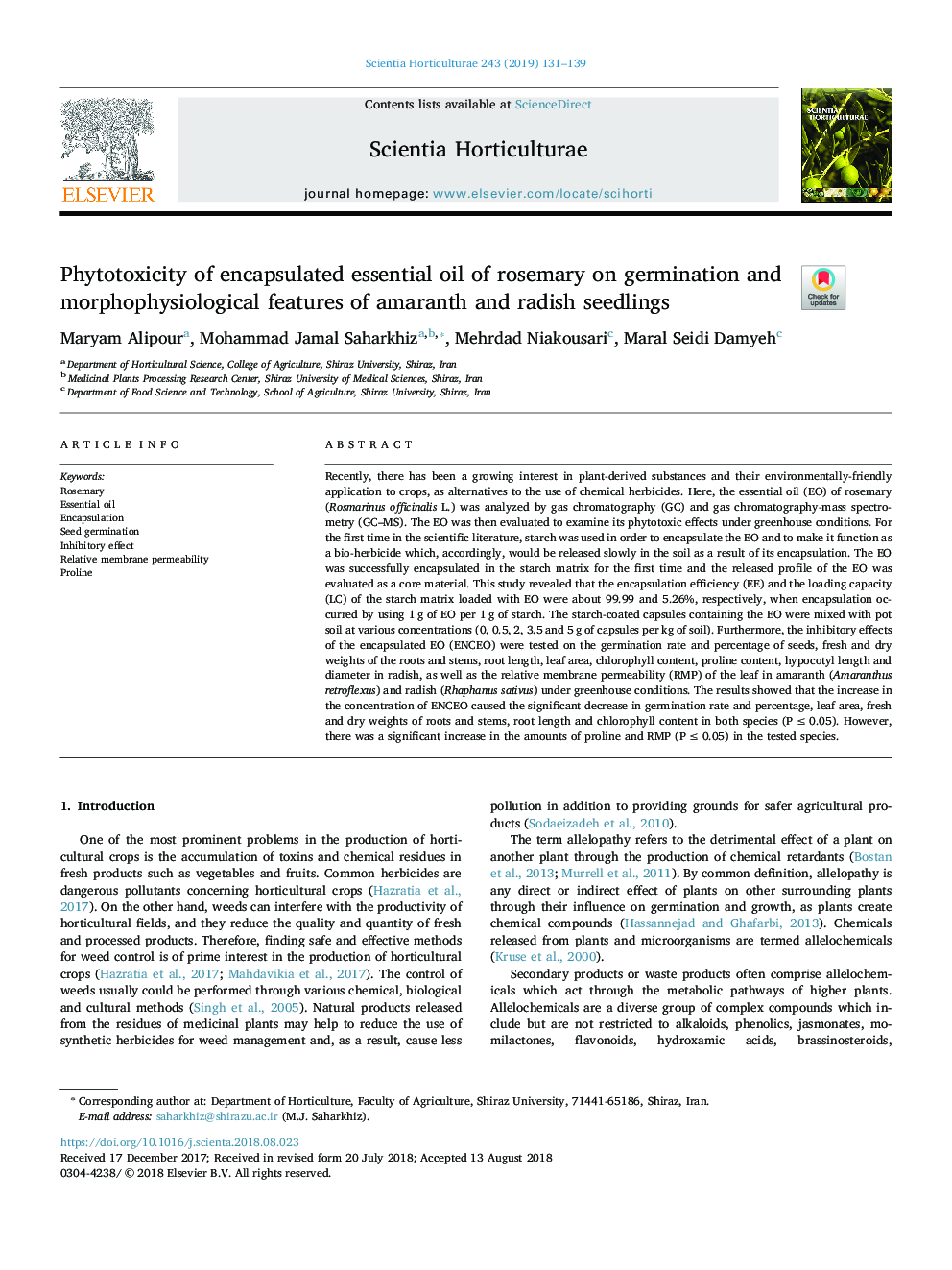| Article ID | Journal | Published Year | Pages | File Type |
|---|---|---|---|---|
| 8892287 | Scientia Horticulturae | 2019 | 9 Pages |
Abstract
Recently, there has been a growing interest in plant-derived substances and their environmentally-friendly application to crops, as alternatives to the use of chemical herbicides. Here, the essential oil (EO) of rosemary (Rosmarinus officinalis L.) was analyzed by gas chromatography (GC) and gas chromatography-mass spectrometry (GC-MS). The EO was then evaluated to examine its phytotoxic effects under greenhouse conditions. For the first time in the scientific literature, starch was used in order to encapsulate the EO and to make it function as a bio-herbicide which, accordingly, would be released slowly in the soil as a result of its encapsulation. The EO was successfully encapsulated in the starch matrix for the first time and the released profile of the EO was evaluated as a core material. This study revealed that the encapsulation efficiency (EE) and the loading capacity (LC) of the starch matrix loaded with EO were about 99.99 and 5.26%, respectively, when encapsulation occurred by using 1âg of EO per 1âg of starch. The starch-coated capsules containing the EO were mixed with pot soil at various concentrations (0, 0.5, 2, 3.5 and 5âg of capsules per kg of soil). Furthermore, the inhibitory effects of the encapsulated EO (ENCEO) were tested on the germination rate and percentage of seeds, fresh and dry weights of the roots and stems, root length, leaf area, chlorophyll content, proline content, hypocotyl length and diameter in radish, as well as the relative membrane permeability (RMP) of the leaf in amaranth (Amaranthus retroflexus) and radish (Rhaphanus sativus) under greenhouse conditions. The results showed that the increase in the concentration of ENCEO caused the significant decrease in germination rate and percentage, leaf area, fresh and dry weights of roots and stems, root length and chlorophyll content in both species (Pââ¤â0.05). However, there was a significant increase in the amounts of proline and RMP (Pââ¤â0.05) in the tested species.
Related Topics
Life Sciences
Agricultural and Biological Sciences
Horticulture
Authors
Maryam Alipour, Mohammad Jamal Saharkhiz, Mehrdad Niakousari, Maral Seidi Damyeh,
